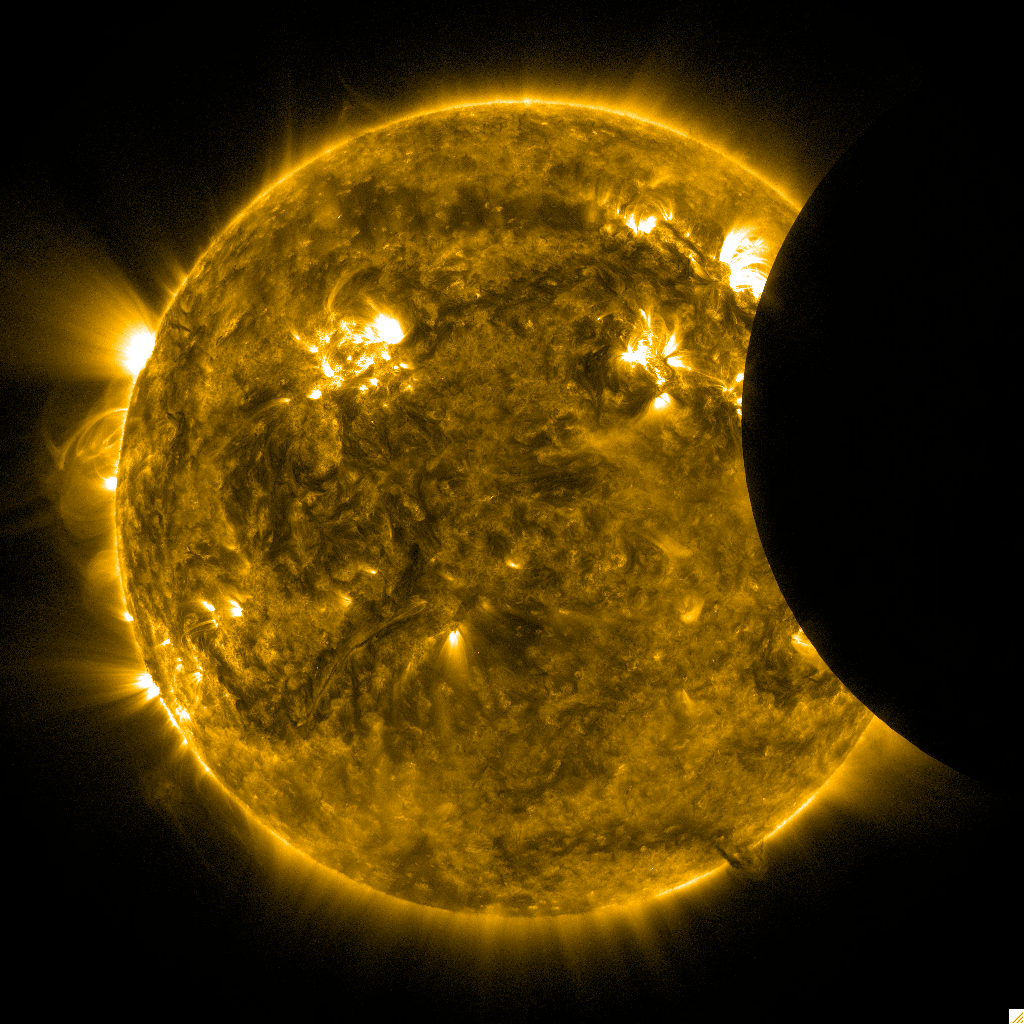'Pac-Man Sun': NASA Probe Sees Solar Eclipse in Space

A NASA spacecraft has captured stunning footage of Tuesday's (Feb. 21) partial solar eclipse, which left our star looking briefly like a huge celestial Pac-Man.
NASA's Solar Dynamics Observatory (SDO) was watching Tuesday morning when the new moon crossed part of the sun's face in a partial eclipse that was visible only from space. SDO snapped a video and photos of the solar eclipse from its lofty perch 22,000 miles (36,000 kilometers) above Earth.
"It's a PacMan sun! The moon is transiting between @NASA_SDO and the sun today!" SDO officials wrote Tuesday in a post to @Camilla_SDO, the mission's mascot Twitter account, referring to the circular video game hero that chows down on ghosts and dots.
The partial solar eclipse provided more than just pretty pictures, however. During its travels, the moon briefly blocked sunspot AR1422, an active region that is blasting strong ultraviolet emissions into space.
"This caused a dip in the EVE [extreme ultraviolet] output and may allow scientists to calibrate the energy emitted by the active region," SDO researchers wrote in a blog post Tuesday.
Solar eclipses occur when the moon is in its new phase and at a point in its orbit that is between Earth and the sun. When the moon aligns perfectly with the sun, as viewed from Earth, a total solar eclipse occurs, while at other times the sun is only partly obscured.
The next partial solar eclipse visible from Earth will occur May 20. Skywatchers in much of Asia, the Pacific and western North America will be able to see it, according to NASA officials.
Get the Space.com Newsletter
Breaking space news, the latest updates on rocket launches, skywatching events and more!
A total solar eclipse will take place Nov. 13, but it will be visible only from parts of northern Australia and the South Pacific. However, skywatchers in much of Australia, New Zealand and southern South America will be able to see a partial eclipse on that day.
The $850 million SDO spacecraft, which launched in February 2010, is the first in a fleet of NASA efforts to study our sun.
The probe's five-year mission is the cornerstone of a NASA science program called Living with a Star, which aims to help researchers better understand aspects of the sun-Earth system that affect our lives and society.
Follow SPACE.com for the latest in space science and exploration news on Twitter @Spacedotcom and on Facebook.
Join our Space Forums to keep talking space on the latest missions, night sky and more! And if you have a news tip, correction or comment, let us know at: community@space.com.

Space.com is the premier source of space exploration, innovation and astronomy news, chronicling (and celebrating) humanity's ongoing expansion across the final frontier. Originally founded in 1999, Space.com is, and always has been, the passion of writers and editors who are space fans and also trained journalists. Our current news team consists of Editor-in-Chief Tariq Malik; Editor Hanneke Weitering, Senior Space Writer Mike Wall; Senior Writer Meghan Bartels; Senior Writer Chelsea Gohd, Senior Writer Tereza Pultarova and Staff Writer Alexander Cox, focusing on e-commerce. Senior Producer Steve Spaleta oversees our space videos, with Diana Whitcroft as our Social Media Editor.









